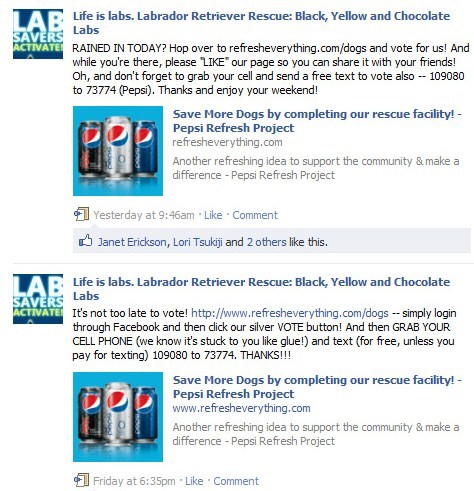People rarely wonder about what they can do to promote or support a brand or product, but they do dream of ways to help their favorite cause. Whether it’s ending poverty, saving the environment or supporting a local charity, many people are more likely to share something they are passionate about.
It comes as no surprise that non-profits and charities, more so than major corporations, have made a push into the world of online social media–and reaped its benefits. The University of Massachusetts Dartmouth Center for Marketing Research recently completed its fourth study on the usage of social media by US charities. While in 2009, ninety-seven percent of charitable organizations were using some form of social media, the latest study found that ALL of the top charities in the US are now using at least one form of social media. Their strategy appears to be one of promoting their cause through blogs, video and social networking sites.
So how do you get people to support your cause, regardless of whether you are for- or non-profit?
1. Create a strong theme with clear goals
CREE created the “Lighting the LED Revolution” campaign that aims to “make energy-wasting, traditional lighting technologies obsolete through the use of energy-efficient, environmentally friendly LED Lighting.” While not a cause in the humanitarian sense, this does educate people and get them excited about being a part of something bigger than a brand or product.
In this video, TreeHugger founder Graham Hill explains the mission of one of his campaigns “Life Edited” as “less is more” and promotes a contest designed to bring awareness to the campaign.
2. Identify your target audience and best social strategy
Rather than leap into every form of social media, for- and non-profit organizations should think about what best fits their needs. They should identify their target audience and choose the channels, messages and types of activities that work best for those audiences.
Most charities feel that video is by far the best way to tell a story online. The organization Invisible People brings awareness to the plight of homeless people by using simple, candid videos like the following:
Another social media tool used effectively by non-profit organizations is Twitter. The hashtag #charitytuesday allows anyone (on Tuesdays) to give thanks or raise awareness for charities they care about. By using this strategy, non-profits can get their name in front of people who already support other causes and may be interested in finding out about new ones.
3. Energize and motivate your supporters to take action
Do you want your supporters to bring in new volunteers, raise general awareness of your charity and its work, or is there a specific call to action that you want your supporters to perform? For each goal, you should think about how best to motivate your supporters to to take action.
The Pepsi Refresh Project is giving away millions of dollars to individuals and non-profits who come up with “refreshing” ideas that receive the most votes. Pepsi successfully connects their brand with social causes and attracts millions of people to their website without asking them to purchase a single product. One of the organizations entered in the Refresh Project is Life is Labs and to get more votes, they have the following calls to action on their Facebook page:

And the best way to get animal lovers to take action—show them who would benefit from their help:
